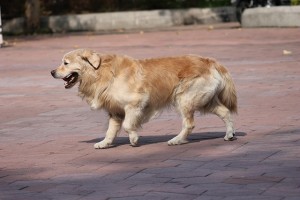Dysplasia is the term used when something doesn’t grow properly – in this case the elbow joint. The elbow is the coming together of 3 bones – the humerus in the upper leg, and the ulna and radius in the lower leg. If any of these grow incorrectly the joint will not be able to work as it was intended. This can lead to the wearing away of the protective surfaces of the bones which can be very painful. The condition may be due to damage which is the result of a fall or trauma, or factors affecting development during puppyhood, or it can be genetic. To find out about how best to look after a puppy to avoid problems read my puppy care blogs .
Elbow problems usually cause lameness due to the pain. During movement the dog’s head will nod up when the affected leg hits the floor and down when the good leg hits the floor. If both elbows are affected the dog may not appear to be lame but may be stiff after rest or periods of exercise and it may be unwilling to exercise for long periods of time. A dog will normally carry 60% of its weight over its front legs but if the elbows are sore weight will be shifted to the hind legs. You may notice the back feet are more under the body to support the weight and the back may start to arch. Sometimes the front feet look like they are flicking out or paddling during movement as the dog tries to move without bending its elbow joint.
There are a number of treatment options for elbow dysplasia. The first consideration is to approach your vet to get the pain under control so normal movement can be resumed. Reducing weight can help and managing the environment by covering slippery floor surfaces and providing aids such as ramps or shallow steps to help the dog access the garden, car or house. A good supportive bed is important and dietary supplements may help modify the effects in the joints. Massage can help address the imbalance that may have developed in muscles trying to compensate for the weakness in the front legs. Hydrotherapy helps dogs exercise while being supported in water. The following strengthening exercises may also be useful.
1.Raising the hind feet on to a low surface to shift weight to the front legs. Start with just a few seconds and increase gradually.
2. Have the front and back feet on an unstable surface such as a large cushion or mattress. Start with a few seconds and increase gradually. Increase the intensity by using treats or toys to lure the dog’s head up and down and from side to side to increase weight shifting.
3. Repeat 2 with the front and back feet on different unstable surfaces.
4. Sit to stand on even surfaces and then on uneven surfaces.
5. Walk slowly down steps. Start with just 2 steps and increase gradually.
With all exercises the quality is more important than the quantity. Aim for 3 good repetitions rather than 10 sloppy ones!
If at any time the dog becomes more lame then allow the dog 2 days rest and resume the exercises at a lower level of intensity


No comments yet.